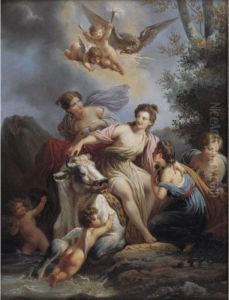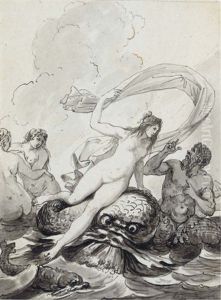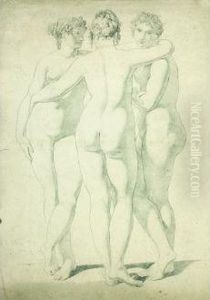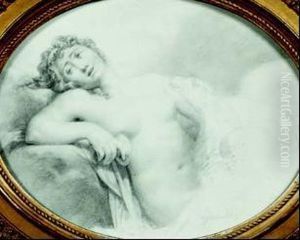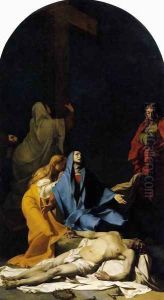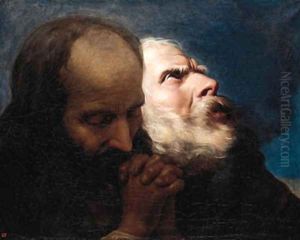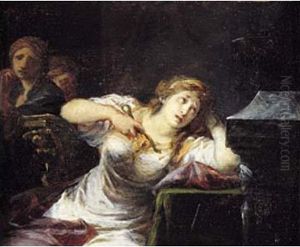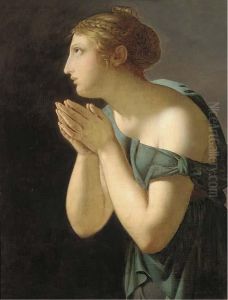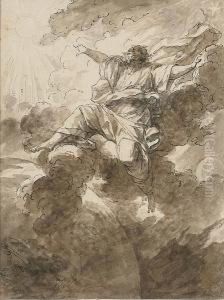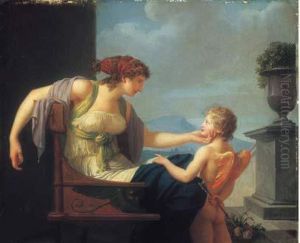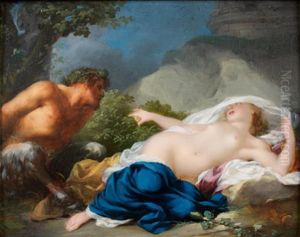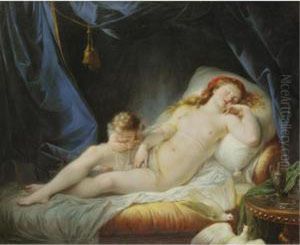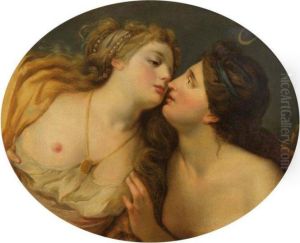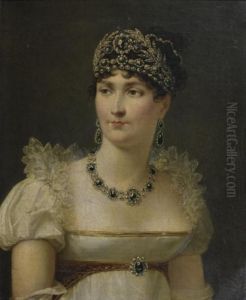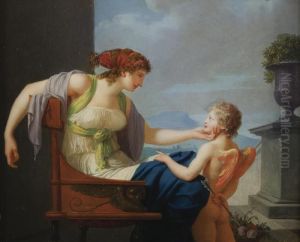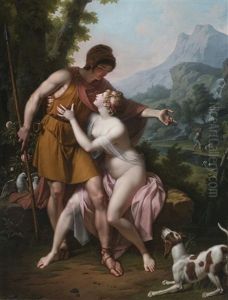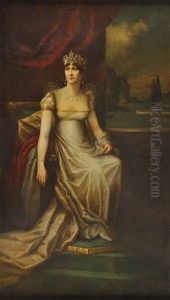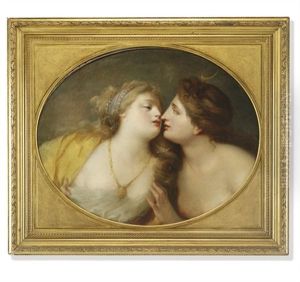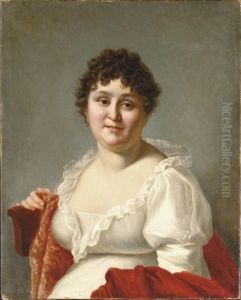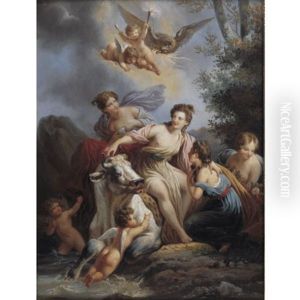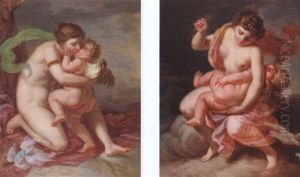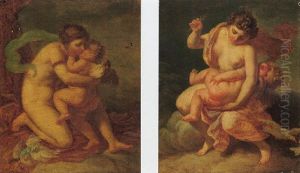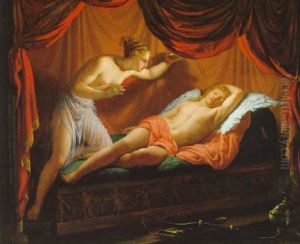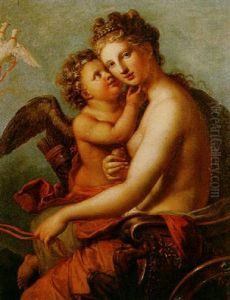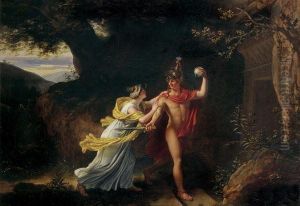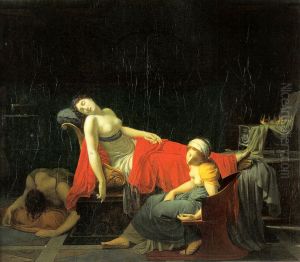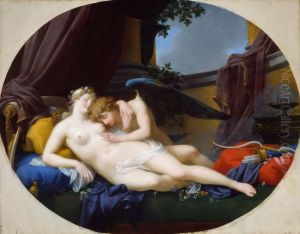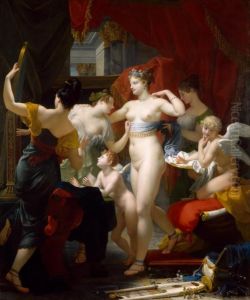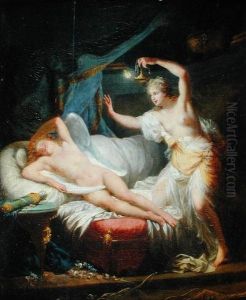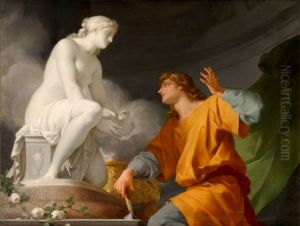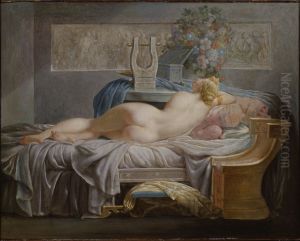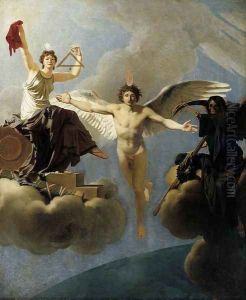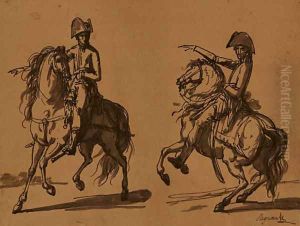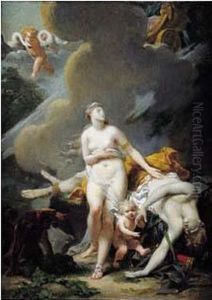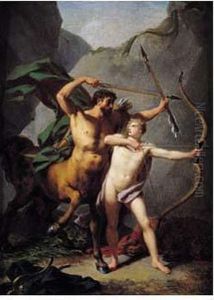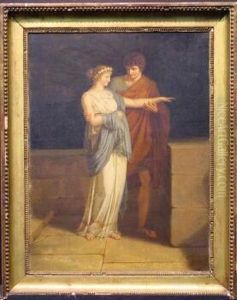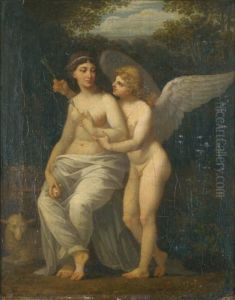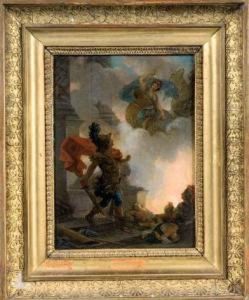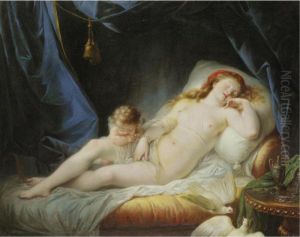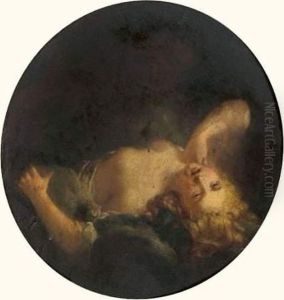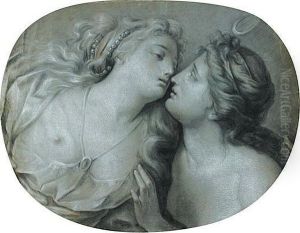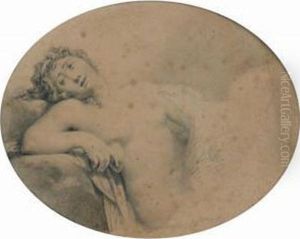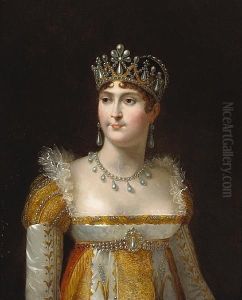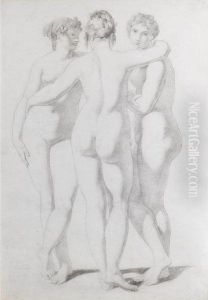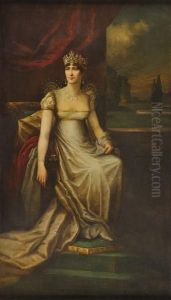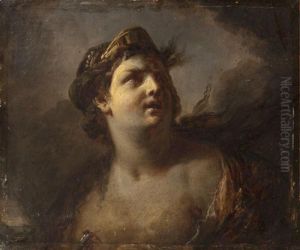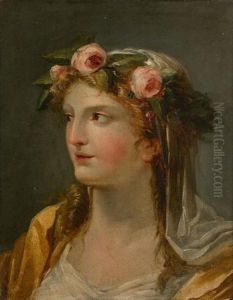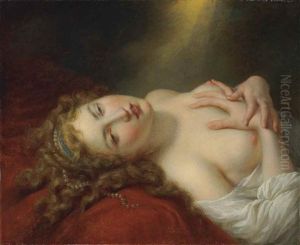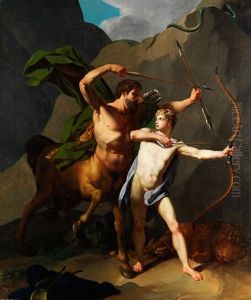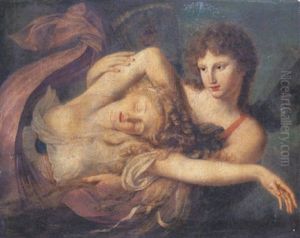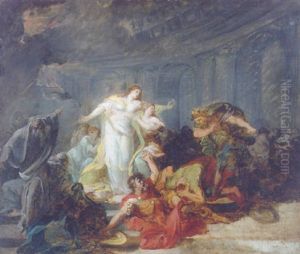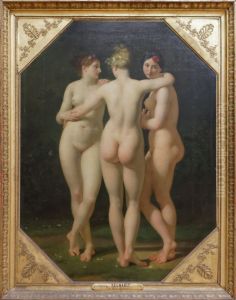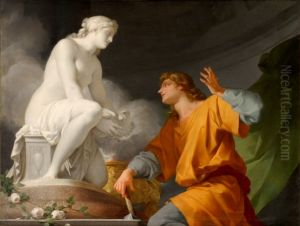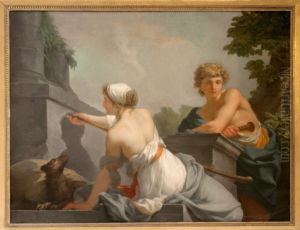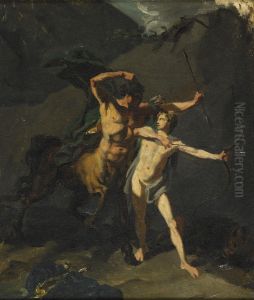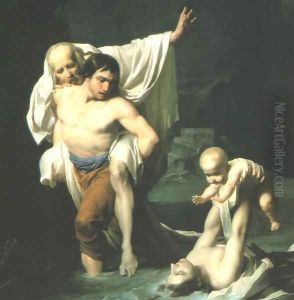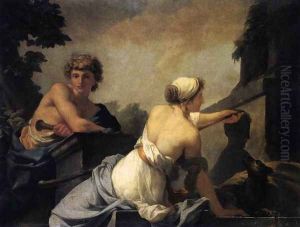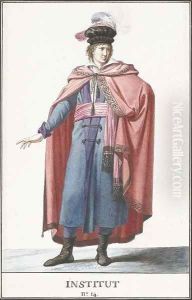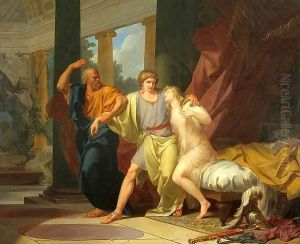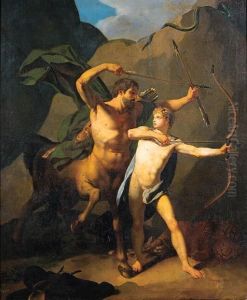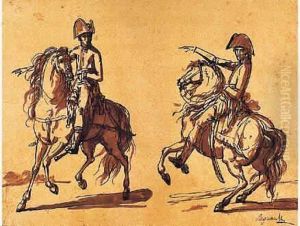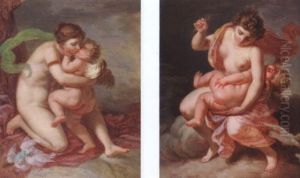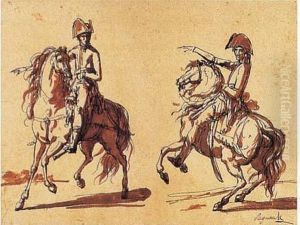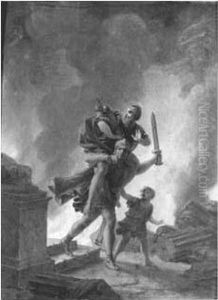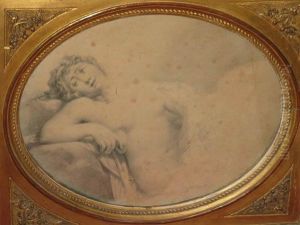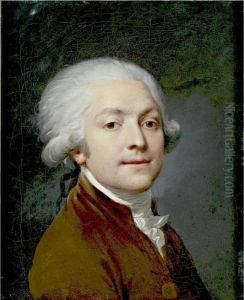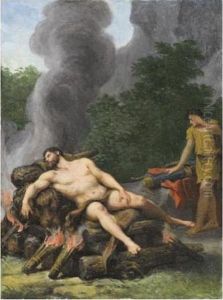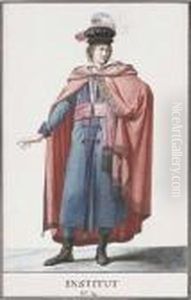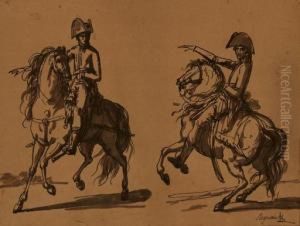Jean-Baptiste Regnault Paintings
Jean-Baptiste Regnault was a prominent French painter of the Neoclassical era. Born on October 9, 1754, in Paris, France, he became known for his classicist paintings which reflected the influence of the ancient Greek and Roman art as well as the Renaissance masters. Regnault first studied under a master named Bardin before entering the prestigious École Royale des Éléves Protégés. His talent soon became apparent as he won the coveted Prix de Rome in 1776 for his artwork, which allowed him to study at the French Academy in Rome.
During his time in Italy, Regnault was deeply influenced by the works of Raphael and other Renaissance artists, as well as the ancient sculptures and architectural marvels he found there. This period was crucial in the development of his style, which was characterized by harmonious composition, clear contours, and serene subjects.
Regnault returned to France in the early 1780s where he quickly established himself as a successful artist. He was accepted into the Académie Royale de Peinture et de Sculpture in 1783 and received numerous commissions from the French monarchy and aristocracy for portraits and large-scale historical and mythological paintings. Some of his most famous works include 'The Descent from the Cross', 'The Education of Achilles by Chiron', and 'Socrates Tears Alcibiades from the Embrace of Sensual Pleasure'.
The French Revolution brought significant changes to Regnault's career as it did to all aspects of French society. During this tumultuous time, he navigated the shifts in power and continued to receive commissions. Notably, he participated in the decorative projects for the Napoleonic regime and contributed works that aligned with the Empire style, which was marked by its grandeur and use of classical motifs.
In his later years, Regnault became a teacher at the École des Beaux-Arts in Paris, where he influenced a new generation of artists. He was known for his supportive approach to teaching, encouraging students to develop their own styles while adhering to classical principles.
Jean-Baptiste Regnault passed away on November 12, 1829, in Paris. His legacy is preserved in his artworks that are held in many major museums around the world, including the Louvre in Paris. Through his paintings, Regnault left an indelible mark on the Neoclassical movement, capturing the elegance and tranquility of the classical spirit in an age of dramatic social and political change.
